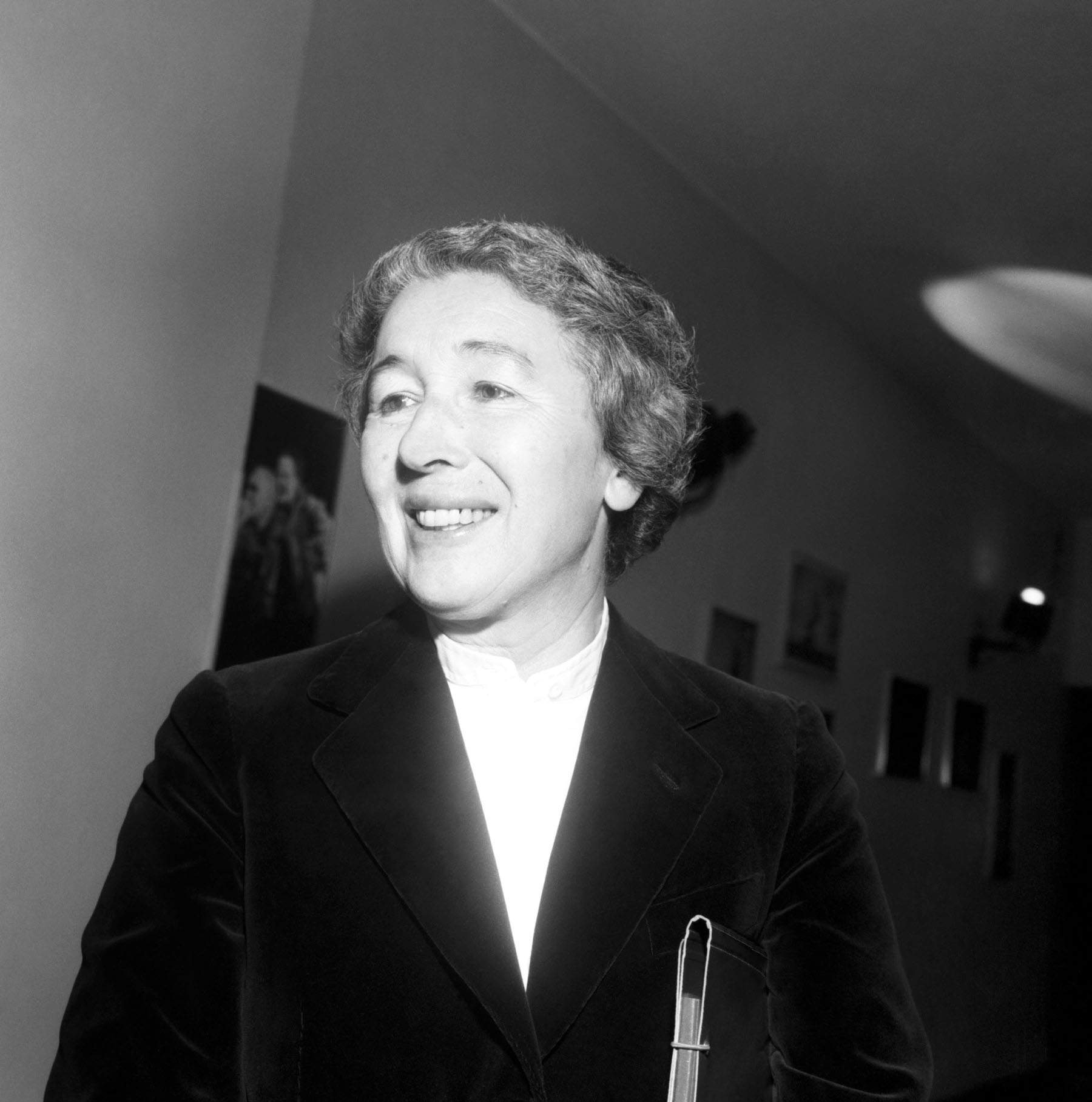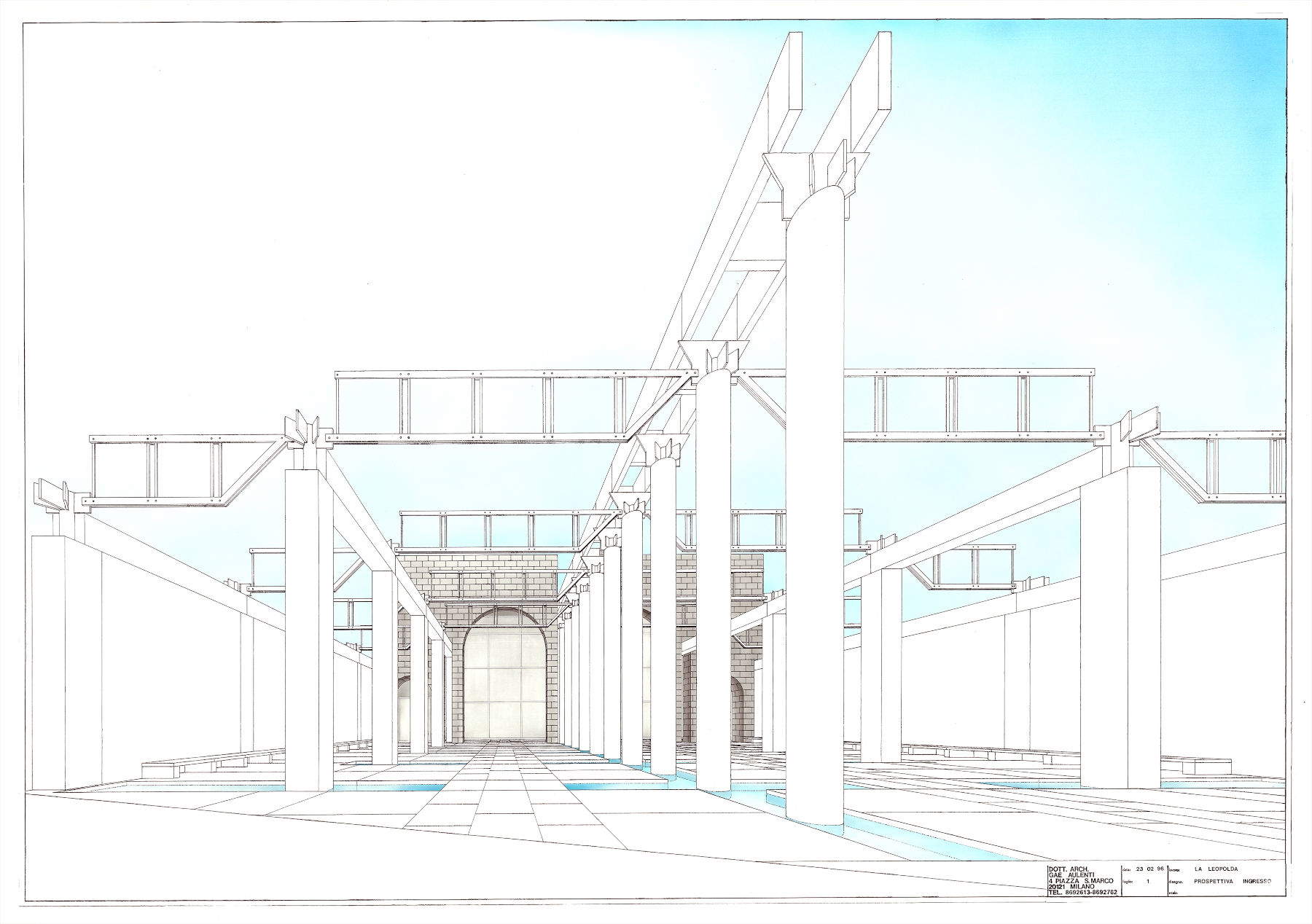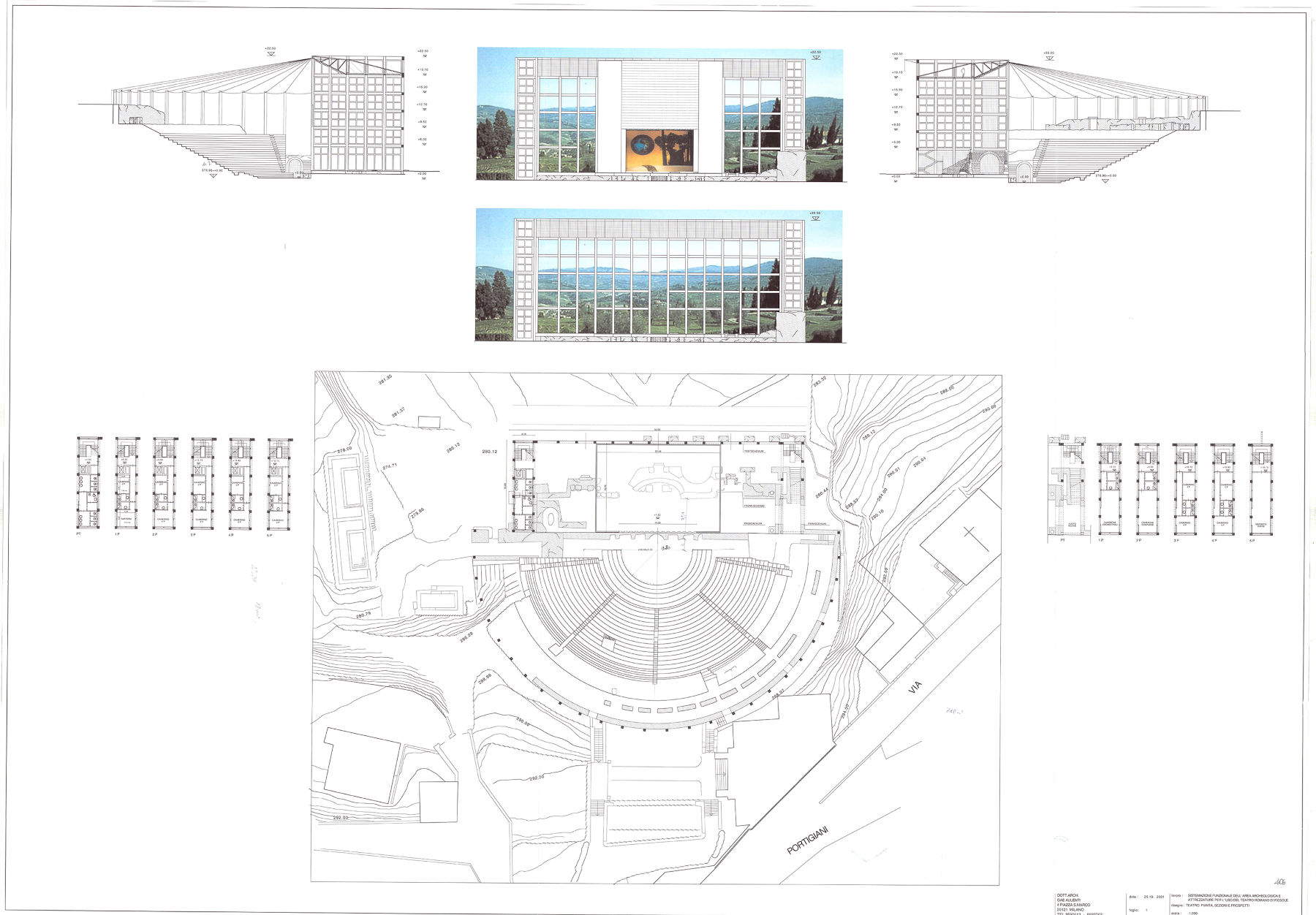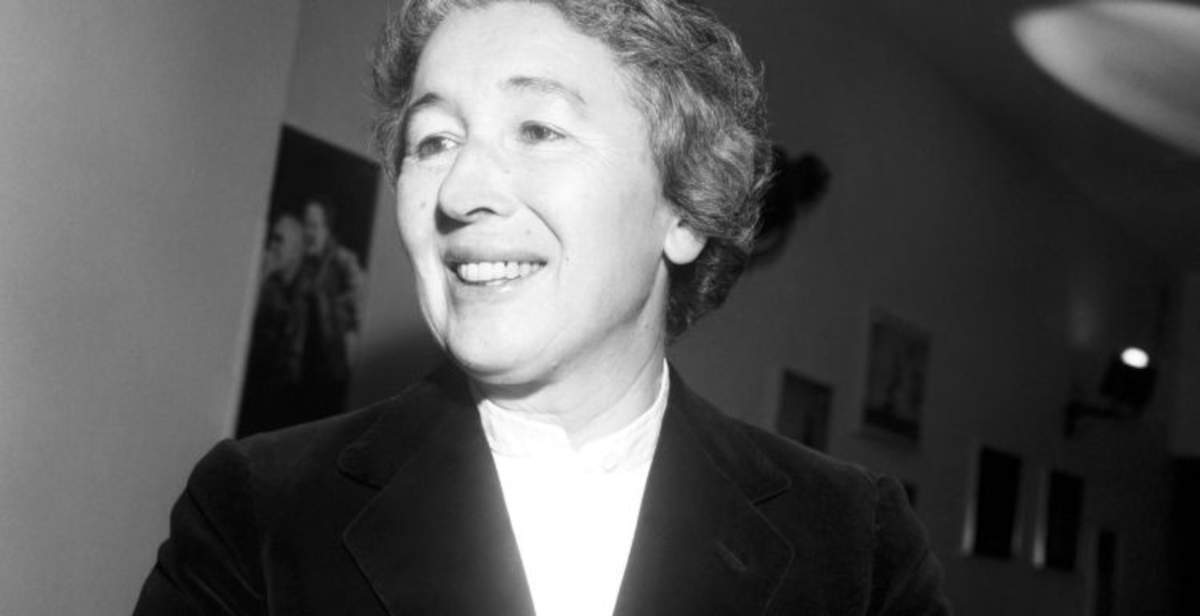From September 18 to November 18, 2025, the Sale Fabiani of Palazzo Medici Riccardi in Florence will welcome Modernity Can Build Otherwise. Gae Aulenti and Tuscany, an exhibition dedicated to the figure of Gae Aulenti (Palazzolo dello Stella, 1927 - Milan, 2012), one of the most influential architects and designers of the 20th century. The exhibition is divided into a second section at the CAMBIO Cultural Center in Castelfiorentino, open from Oct. 4 to Nov. 18, expanding the analysis of the architect’s works and projects on the Tuscan territory. The initiative is promoted by Fondazione Architetti Firenze (FAF), Master Museo Italia (MMI) of the University of Florence, Gae Aulenti Archives of Milan, with the support of Città Metropolitana di Firenze, Fondazione Cambiano and Fondazione MUS.E. It is curated by Emanuela Ferretti of the University of Florence and architect Silvia Moretti of the Florence Architects Foundation, with sponsorship and contributions from the Region of Tuscany, Fondazione CR Firenze, Ance Firenze and Unioncamere Toscana. Supporting bodies include the City of Florence, City of Castelfiorentino, Florence Chamber of Commerce, Italian FS Foundation, Giovanni Michelucci Foundation, Opera di Santa Maria del Fiore and Florence Order of Architects. The exhibition is also made possible thanks to the contribution of FSC® Italia, Berni Store, and the support of Martinelli Luce and Unicoop Firenze.
“The exhibition,” explains Valentina Zucchi, curator of the museum at Palazzo Medici Riccardi, “confirms the palace’s focus on the history of architecture by presenting a valuable insight into one of the greatest figures of our time and his projects for our city and territory. Thanks to the exhibition - so rich and original, the result of the work not only of scholars and experts but also of young students - Gae Aulenti’s works for Tuscany become the protagonists of a single narrative that sees the aesthetic relationship between forms, functions and relationships at the center. If for Aulenti all architecture was and is linked to the polis and must take into account collective participation, the exhibition contains within itself the idea of the city and invites us to that exercise of thought and consciousness about public spaces that characterized her entire oeuvre, making it so profound and eloquent: because utopia, she wrote, is the thought of a possible future.”

“The Foundation and the Order of Architects of Florence have among their main purposes the promotion of initiatives that fuel cultural debate and bring the public closer to the language of architecture,” say the President of the Order of Architects of Florence, Silvia Ricceri, and the President of the Foundation of the Order of Architects of Florence, Caterina Bini. “This exhibition aims to be not only an exhibition, but also a moment of confrontation and participation, in which architecture becomes an opportunity for collective reflection. Through drawings, photographs, documents and models, the exhibition restores centrality to the project, understood as a tool for conscious transformation and as a key to critical reading of urban space and the culture of the city.”
The exhibition is developed through eight thematic nuclei, presented through a selection of drawings from the Gae Aulenti Archive, photographs, specially made models and digital narratives. The participation of students from MMI and the School of Architecture of the University of Florence contributed to further develop the exhibition content. Gae Aulenti’s connection with Tuscany was consolidated in the early 1960s with his collaboration with local companies, such as Poltronova and Martinelli Luce, which led to the creation of the Sgarsul chair and the Pipistrello lamp. In the architectural field, starting in 1969 the architect signed projects for the Pucci family, including the renovation of theAltana of Palazzo Pucci in the center of Florence and the redesign of the garden of the villa of Granaiolo in Castelfiorentino. Subsequently, he developed other interventions in the Tuscan territory, including a single-family house in Pisa and the setting up of the Book Gallery in Viareggio, which no longer exists. The mid-1970s saw Aulenti in Prato, where she collaborated with Luca Ronconi on theater sets, further consolidating her presence in Tuscany.

In the following years, Gae Aulenti signed important urban and architectural interventions: the new entrance to the Santa Maria Novella Station from Track 16 (1990), the arrangement of the square in front of the Leopolda Station (1996), and participated in the competitions for the New Uffizi Exit (1998) and for the Museo dell’Opera del Duomo (2001). The architect’s approach aims to reconcile innovation and dialogue with the context, creating relationships between contemporary design and the historical memory of places. In Florence, Aulenti’s role transcends the individual projects she has completed. In 1998, she was invited to participate in the competition for the new exit of the Uffizi, facing the complex challenge of attributing a new identity to a residual space. In 2001, she serves as chairman of the jury for the competition for the High Speed Train station, won by Norman Foster, emphasizing her experience and international recognition. The title of the exhibition summarizes his design philosophy: design culture can express a contemporary language without neglecting quality and dialogue with the context.
The exhibition aims to highlight a lesser-known chapter of Aulenti’s work, delving into her work in Tuscany through the dual venue of Florence and Castelfiorentino. At the Palazzo Medici Riccardi, the main projects for the city and its territory are collected, while at the CAMBIO Centro Culturale the exhibition delves into the architect’s work on the theme of residence, highlighting the relationship between tradition and innovation and expanding knowledge of areas outside the conventional tourist circuits. The exhibition also offers insights into the possibilities of contemporary architecture in historic contexts, inviting consideration of urban transformations as an opportunity for sustainable and quality interventions. The exhibition catalog, published by Opera Omnia Edizioni and curated by Emanuela Ferretti and Francesca Mugnai, is divided into two parts: ten thematic essays and a final text inspired by Aulenti’s work, accompanied by nineteen fact sheets dedicated to the drawings and objects on display according to the order of the exhibition itinerary in the two venues.

In parallel, on September 19 Pitti Immagine will present, at the Stazione Leopolda, the monographic volume Gae Aulenti. La Gae, published by Electa and edited by Giovanni Agosti, with the participation of Gae Aulenti Archive director Nina Artioli, Triennale Milano architecture curator Nina Bassoli, costume designer and Gae Aulenti’s daughter Giovanna Buzzi, actor Sandro Lombardi and Pitti Immagine CEO Raffaello Napoleone. The event is part of the CONTESTO format, which offers presentations and meetings in the run-up to the next edition of the TESTO [How to Become a Book] publishing fair.
Lectures related to the exhibition will take place from October to December 2025 at various venues, including the Department of Architecture at the University of Florence, the Palazzina Reale headquarters of the Order and Foundation of Architects Florence, and the CAMBIO Cultural Center, further consolidating the debate around the production and influence of the architect in the Tuscan and national context.
 |
| Modernity according to Gae Aulenti: an exhibition between Florence and Castelfiorentino |
Warning: the translation into English of the original Italian article was created using automatic tools. We undertake to review all articles, but we do not guarantee the total absence of inaccuracies in the translation due to the program. You can find the original by clicking on the ITA button. If you find any mistake,please contact us.